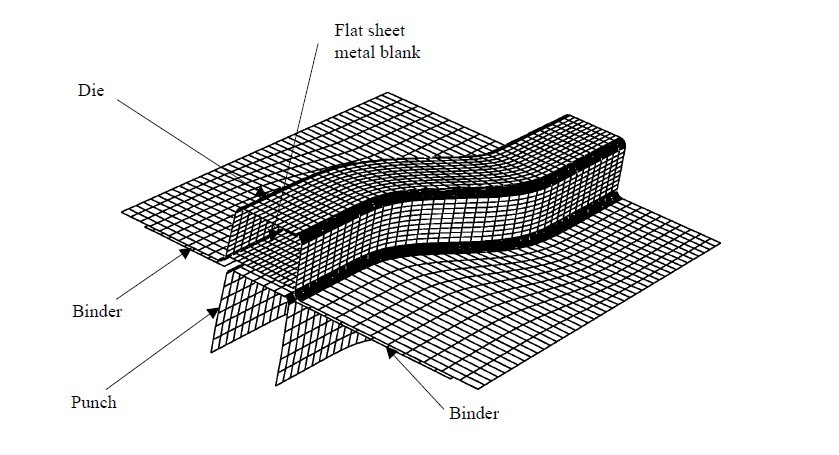原文作者: | Nielen Stander, Mike Burger, Xinhai Zhu and Bradley Maker |  |
发布时间: | 2014-08-15 | |
来 源: | American Institute of Aeronautics and Astronautics | |
下载链接: |
Abstract
The purpose of this study is to demonstrate a methodology for springback compensation in sheet metal stamping operations. An optimization method based on the D-optimality criterion for experimental design and successive linear response surface approximations is employed to minimize the difference between the simulation results and the intended design.
A subdomain reduction scheme is applied to determine the subdomain size for each iteration. The procedure, which has been implemented in the program LS-OPT, is interfaced with the simulation package LS-DYNA, and the parametric preprocessor TrueGrid. These tools are used to input original tool geometry, material, and process parameters, identify design variables, perform springback simulations and output optimized tool geometry. The standardized NUMISHEET’96 S-Rail is used as a benchmark example in this study. A converged optimized design is obtained in four or five iterations. It is found that springback trends are consistent with changes in the die shape, thereby suggesting other effective strategies for springback compensation.